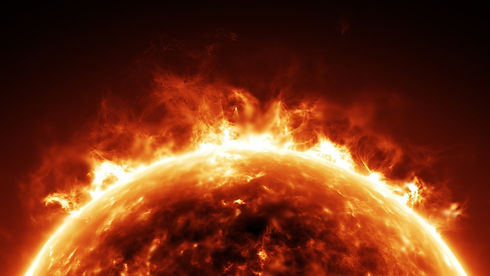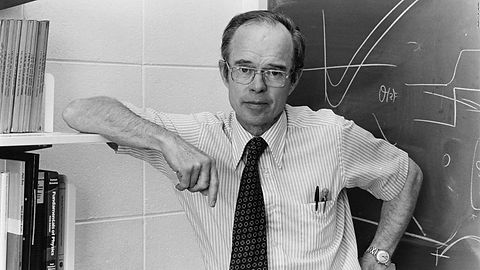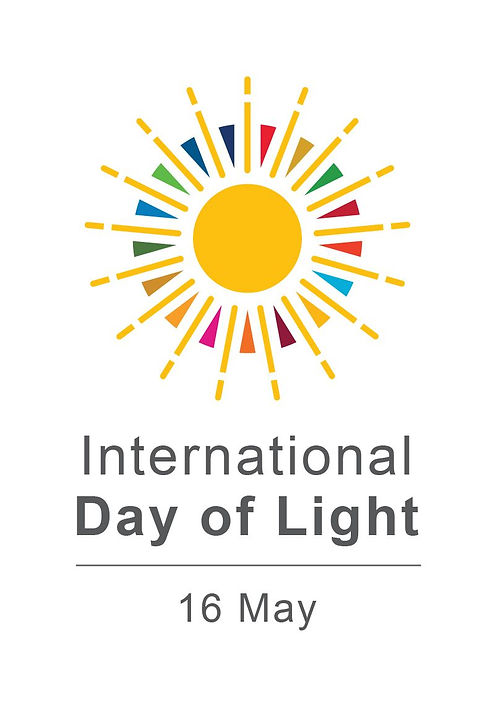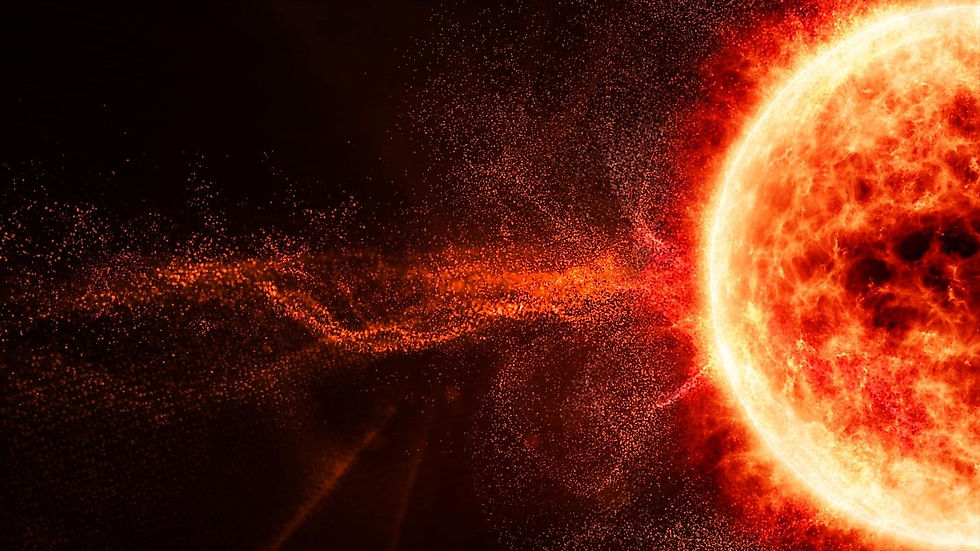
A BEGINNER'S MINI GUIDE TO THE SOLAR WIND

WHAT IS THE SOLAR WIND?
The solar wind is a stream of energized, charged particles, primarily electrons and protons. It flows outward from the Sun, through the solar system at speeds as high as 900 km/s, and at a temperature of 1 million degrees (Celsius). It is made of plasma. First proposed in the 1950's by physicist Eugene Parker, the solar wind is visible in the halo around the Sun during an eclipse and sometimes when the particles hit the Earth’s atmosphere, such as the Aurora Borealis and Aurora Australis. ((Courtesy Univ. of Chicago, Louise Lerner.)

The surface of the Sun is around 6,000 degrees Fahrenheit, but the Sun's corona is more than a thousand times hotter. The corona is so hot the Sun’s gravity can’t hold it. Particles are flung off into space and travel throughout the solar system in every direction. As the Sun spins, it creates complex swirls and eddies of particles.
These particles, mostly protons and electrons, travel about a million miles per hour as they pass Earth. This flow of particles, the “solar wind,” has an impact on our lives. The effects of storms on the Sun’s surface can affect our telecommunications networks and can pose a threat to astronauts in space. Here is a link from NASA about the Sun's corona.
The image shown here was taken during a total solar eclipse.
WHY IS THE SUN'S ATMOSPHERE SO HOT?
The corona – the ring around the sun that we can see when there’s a solar eclipse – is a million degrees. This is much hotter than the Sun itself, which is a few thousand degrees. So how does the energy from the sun get into its atmosphere and make it hotter?
The sun is essentially boiling on the surface. That motion on the surface tangles the magnetic field, and somehow that magnetic energy is getting up to the top of the atmosphere. We still don't kinow why this happens, but hopefully the Parker Solar Probe will help to give us some answers.

WHO DISCOVERED THE SOLAR WIND?
Eugene Parker (see next page) was the first person to realize that the Sun is not in equilibrium, as was previously thought. Quite the opposite, it releases mass; the charged gas of ions and electrons that makes up the Sun’s “atmosphere” is expanding as a solar wind that stretches throughout our planetary system. For the first time in its history, NASA named its solar probe spacecraft after a living person.

EUGENE PARKER
In 1859, astronomer Richard Carrington noticed a huge flare on the Sun and that a day later there was a change in the earth’s magnetic field. The link was made.
But it was Eugene Parker in 1957 who came up with the first theory of the solar wind. He worked out that matter was streaming off – escaping from the sun’s atmosphere into space. At first, Parker’s ideas were resisted and his paper was rejected. But his equations – which were relatively straightforward – proved his theory to be right.

INTERNATIONAL DAY OF LIGHT 2025
"A Beginner's Mini Guide to the Solar Wind"
was originally created to mark
the International Day of Light 2021
The International Day of Light (IDL) is an annual, global public outreach event. It evolved from the 2015 International Year of Light. The goal is to raise awareness about light and the role it plays in science, culture and art, education, sustainable development, and in fields as diverse as medicine, communications, and energy. This year's IDl message, in partnership with other science organizations. is "Trust Science", encouraging both scientists and the public to sign and support a declaration affirming the importance of public confidence in the scientific process. You can take the Trust Science pledge here.

Join the thousands of science supporters including educators, scientists, engineers, healthcare professionals, Nobel Laureates, science enthusiasts, organizations, students and people around the world who rely on solutions provided by science and technology. Take the TrustScience pledge here.


"IN OUR TIME" EPISODE ON THE SOLAR WIND
"We notice its impact when earth’s magnetic field diverts it towards our poles for the northern or southern lights, or when it makes comet tails, or when it damages electrical equipment – but what is solar wind?
In Our Time explores the phenomenon behind the auroras at Earth's poles – the stream of charged particles spreading out from the Sun to the border of the solar system." With host Melvyn Bragg.
RESOURCES
There are many excellent resources available about the Solar Wind, these are just a few.

ABOUT
This mini guide was originally created by Natasha van Bentum to mark IDL2021 and each year thereafter. She was a volunteer with the original UNESCO International Year of Light in 2015 (IYL2015), on "Light Beyond the Bulb", a project of IYL2015, created by Kimberly Kowal Arcand and Meghan Watzke. Natasha was also an active volunteer for the International Year of Astronomy in 2009 and is a member of the Royal Astronomical Society of Canada. Follow Natasha on Twitter at "LBTB_YYJ". (Light Beyond the Bulb - Victoria): https://twitter.com/LBTB_YYJ


